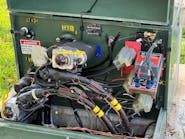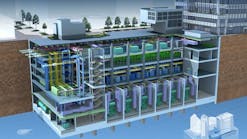Alaska Energy Authority Awarded $206.5 Million Grant To Build HVDC Submarine Cable
U.S. Senators Lisa Murkowski and Dan Sullivan (both R-Alaska), and Representative Mary Sattler Peltola (D-Alaska) announced a $206.5 million grant awarded to the Alaska Energy Authority (AEA) to build a HVDC submarine cable between the Kenai Peninsula and Anchorage, thereby adding redundancy to the Alaska Railbelt electrical grid system during disruptive events.
“From elevating the Railbelt’s grid resiliency and reliability, to providing greater Power Cost Equalization assistance to rural electric utilities, all Alaskans will see their energy costs lowered when this project reaches completion,” said Sen. Murkowski.
“I look forward to AEA breaking ground on this important project that will have the potential to significantly expand hydroelectric power and other renewables, modernize our state’s electrical grid, help lower the cost of energy for thousands of Alaskans, and go a long way toward keeping our lights and heat on when we need it most,” said Sen. Sullivan.
The total project cost will be $413 million with 100% matching funds required for the grant. The project, expected to be completed in eight years, will include multiple BESS throughout the Railbelt electrical grid.
The federal funds for the grant, which is administered by the U.S. Department of Energy (DOE) Grid Deployment Office (GDO), were secured by the 2021 Infrastructure Investment and Jobs Act (IIJA).
“We’re taking our first step into a cleaner, stronger energy future, with more jobs and lower costs for Alaskans,” said Rep. Peltola. “Alaska is an energy powerhouse, from tidal to wind to LNG and more. We shouldn’t have to import expensive Outside energy when we have so many affordable options at our fingertips, and now we have the chance to make our energy grid truly work for Alaskans.
“This $206.5 million award, with another $206.5 million in matching funds, represents a sea change in Alaska’s energy grid, said Rep. Peltola. “This project will fund redundant transmission and battery energy storage systems throughout the Railbelt, creating a stronger energy grid that will have more capability to accept and distribute energy from renewable sources throughout the state, bringing more domestic Alaskan energy to power more Alaskan homes and businesses.”


